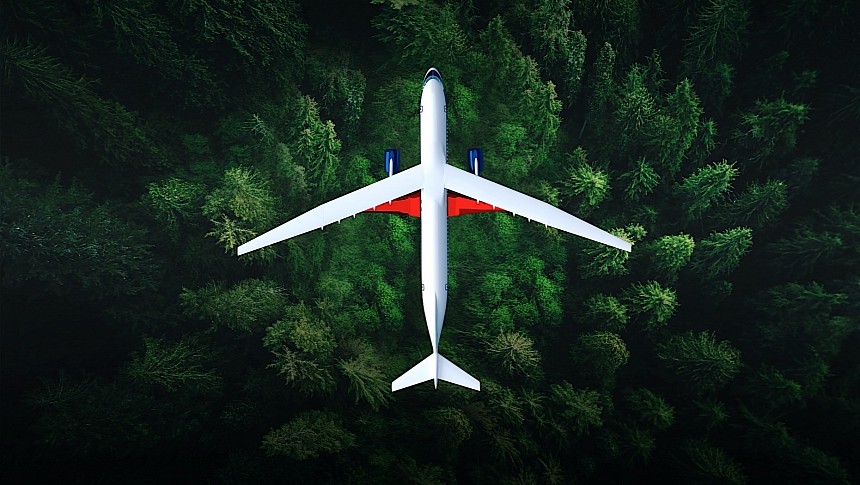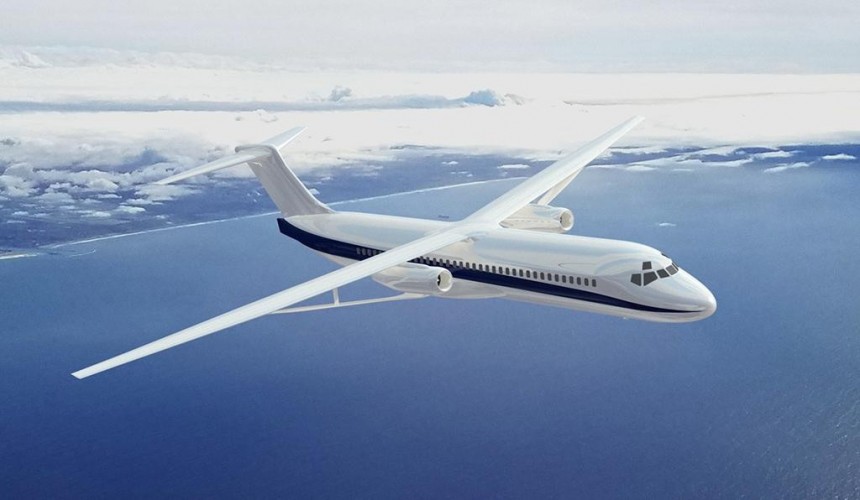For more than a century now, humanity has had the ability to take to the sky. The aviation industry, one of the most dynamic of any field of human activity, has progressed greatly during this time, often with what seem like incredible leaps. Yet some things appear to have always been the same.
Take the design of an aircraft wing, for instance. There have been several designs used over the years, and, depending on application, they come in various shapes and sizes even today, but they all have something in common: aside from where they meet the fuselage, they are freestanding, not supported by struts or some other means, no matter how large they are.
But that may change in the not-so-distant future, as it would seem using diagonal struts to brace the wings to the rest of the plane could help aircraft cut back on fuel consumption, while also helping generate more lift.
One such concept is called Transonic Truss-Braced Wing (TTBW), and was made famous by Boeing and NASA through something called the Sustainable Flight Demonstrator project. That would be a plane meant to achieve a 30 percent reduction in fuel consumption and emissions compared to today’s standards and planned to take to the sky in 2028.
While working on the demonstrator with Boeing, NASA has also started its own research into a TTBW design and announced this week the first series of tests on a scale model just ended at its Armstrong Flight Research Center facility in California.
We’re talking about a 6-foot (1.8 meters) wing that was subjected to load testing. The procedures focused on “how forces transferred from the main wing to the strut,” because there was no previous data on this. There was need to get more info on how this happens because a larger, 10-foot (3 meters) variant of the wing will be put together by the end of the year.
It too will enter a series of tests in 2024, but unlike the current wing the new one will also come with a swept-back angle, and “more representative connections between the fuselage and the strut and wing.”
All of the above research may seem in its early stages, but NASA has, in fact, been working on this type of wing design for decades. Work will probably accelerate in the coming years, as the goal of the Sustainable Flight Demonstrator project is to “inform a new generation of single-aisle aircraft that will help the U.S. achieve its goal of net-zero greenhouse gas emissions by 2050.”
The plane that will result from this project will not only incorporate the TTBW wing, but also a series of other technologies meant to improve fuel consumption and emission levels. We expect more and more info on them to be released as testing advances.
But that may change in the not-so-distant future, as it would seem using diagonal struts to brace the wings to the rest of the plane could help aircraft cut back on fuel consumption, while also helping generate more lift.
One such concept is called Transonic Truss-Braced Wing (TTBW), and was made famous by Boeing and NASA through something called the Sustainable Flight Demonstrator project. That would be a plane meant to achieve a 30 percent reduction in fuel consumption and emissions compared to today’s standards and planned to take to the sky in 2028.
While working on the demonstrator with Boeing, NASA has also started its own research into a TTBW design and announced this week the first series of tests on a scale model just ended at its Armstrong Flight Research Center facility in California.
It too will enter a series of tests in 2024, but unlike the current wing the new one will also come with a swept-back angle, and “more representative connections between the fuselage and the strut and wing.”
All of the above research may seem in its early stages, but NASA has, in fact, been working on this type of wing design for decades. Work will probably accelerate in the coming years, as the goal of the Sustainable Flight Demonstrator project is to “inform a new generation of single-aisle aircraft that will help the U.S. achieve its goal of net-zero greenhouse gas emissions by 2050.”
The plane that will result from this project will not only incorporate the TTBW wing, but also a series of other technologies meant to improve fuel consumption and emission levels. We expect more and more info on them to be released as testing advances.






